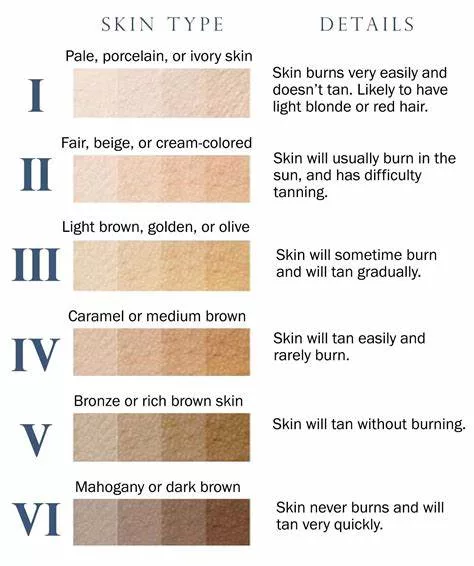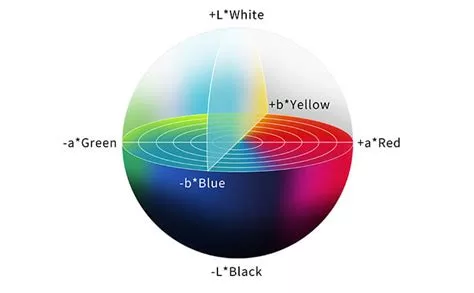Routes that could bridge unfair biases with skintone in video production
Skin tone refers to the natural color of a person's skin, which is determined by the amount of melanin in the skin. Melanin is a pigment that is produced by specialized cells in the skin called melanocytes. The amount of melanin in a person's skin is determined by several factors, including genetics, sun exposure, and age.

Skin tone can vary widely among different populations and individuals. In some cultures, there is a preference for darker skin, whereas others prefer lighter skin tones. These representations have effects on individuals’ self-esteem, job prospects, and overall well-being.
Understanding your own skin tone can be helpful when choosing makeup or clothing that complements your complexion. Skin tones are commonly described as cool, warm, or neutral, depending on the undertones of the skin. Cool skin tones have pink or blue undertones, while warm skin tones have yellow or golden undertones, and neutral skin tones have a balanced mix of both. Skin tone is an important aspect of human diversity, and understanding and celebrating the range of skin tones is important for promoting inclusion and combating discrimination.
Importance of Skin tone in Video Production
Skin tone is an important aspect of video production, particularly in terms of color grading and correction. The goal of color grading is to create a visually pleasing image by adjusting colors, brightness, and contrast. Skin tone is an essential part of this process as it should look natural and realistic. Inaccurate representation of skin tone can negatively impact the overall perception and quality of the video.
When it comes to capturing footage, lighting is crucial in achieving accurate skin tones. Different lighting situations can produce different skin tones, and it is important to be aware of this when selecting the lighting setup for a shoot. It is also essential to monitor and adjust the camera settings to ensure the most accurate representation of skin tones.
In post-production, skin tones are typically adjusted during the color grading process to ensure consistency and accuracy throughout the video. Colorists may use color grading software and tools to make subtle adjustments to the hue, saturation, and luminance of the skin tones to create a more visually pleasing image. Skin tone is an important factor in video production that it requires attention to detail and a deep understanding of color grading techniques. Ensuring accurate skin tone representation can greatly enhance the quality of a video and make it more visually appealing to the audience. Likewise poor treatment of it would create disparity, this is where Skintone scale come in.
Skin Tone Scale
Skin tone scale in video production refers to a system used to ensure consistent and accurate representation of skin tones in video footage. It helps to address the issue of colorism, where certain skin tones are favored or preferred over others, and can lead to racial bias and inequality.
One example of a skin tone scale used in video production is the Monk Skin Tone Scale, which was developed by Dr. Timnit Gebru, a computer scientist and advocate for algorithmic fairness. The scale is designed to be inclusive and representative of a wide range of skin tones, and can be used to evaluate how well a video camera or editing software can capture and reproduce different shades.
Types of Skin tone scale
The four types of skin tone scales are:
- Fitzpatrick Skin Type Scale – This scale classifies skin types into six categories based on the amount of melanin pigment in the skin and the skin’s response to UV light.
- Monk Skin Tone Scale – This scale was developed by Dr. Michelle B. Monk and is used to evaluate and standardize skin tone in the beauty and fashion industry.
- Von Luschan Chromatic Scale – This is a scale that uses a set of 36 color tiles to classify human skin color.
- L* a* b* Scale – This is a CIELAB color space scale that is used to quantitatively measure the color of skin, hair, and other materials.
Fitzpatrick skin type scale
Fitzpatrick skin type scale was developed by a Harvard dermatologist named Thomas Fitzpatrick and it categorizes human skin into six different types based on how the skin responds to sun exposure which clearly does not expansively cater for variance of skintone. Something that may not have been of importance at the time of its development due to limitations of color depth of computer. Here is an overview of each Fitzpatrick skin type:
- Type 1: Very fair skin that always burns and never tans. (ivory)
- Type 2: Fair skin that burns easily and tans minimally.
- Type 3: Skin that may burn moderately and tans gradually to a light brown.
- Type 4: Skin that burns minimally and tans well to a moderate brown. ( olive to moderate brown skin)
- Type 5: Skin that rarely burns and tans darkly to brown. ( dark brown skin)
- Type 6: Skin that never burns and tans darkly to almost black. (deeply pigmented dark brown to darkest brown skin)
Note that the scale may not be a completely accurate representation of all skin types and should be used only as a general guideline.
It is important to note that this scale only takes into account how the skin reacts to sun exposure and does not account for other physical characteristics such as texture or wrinkles. It categorizes skin into six types based on the skin’s response to UV light, which is determined by the amount of melanin pigment in the skin.

The Monk Skin Tone Scale
The Monk Skin Tone Scale is a color scale developed by sociologist Ellis P. Monk Jr. in collaboration with Google. The scale defines a range of 10 skin tones, from light to dark, based on extensive research and surveys of thousands of participants across the United States. The goal of the scale is to provide a more nuanced and accurate way to capture human skin tone diversity, which is of particular importance in fields such as healthcare, product design, and photography.
The Monk Skin Tone Scale is designed to replace previous scales that were considered inaccurate and insensitive to the wide range of skin tones that exist . The scale is currently being used by Google to improve color accuracy in their products, and they have made the scale available to other companies to use as well. The hope is that this new scale will lead to more inclusive product design and research, as well as greater awareness of the importance of skin tone diversity.
How to use the Monk Skin Tone Scale
To use the Monk Skin Tone Scale in your own work or products, you can follow these steps:
- Acquire the Monk Skin Tone Scale: The scale is open-sourced and can be found online on various code-sharing platforms or by accessing the Google repository hosting it.
- Understand the Scale: The scale is based on a 1-10 rating system, where 1 represents the lightest skin tone, and 10 represents the darkest skin tone. The scale is more diverse and inclusive than previous standards because it includes a greater range of skin tones and compares each new skin tone with well-known people on their skin tone range.
- Implement the Scale: Once you have the scale, you can use it to improve the accuracy of skin tone representation in your technology by assigning a Monk Skin Tone rating to each image or video based on the skin tone of the people depicted.
By using the Monk Skin Tone Scale , you can ensure that your work or products are more inclusive and represent a broader range of skin tones, thereby reducing bias and promoting equity in technology.

L* a* b* Scale
The Lab* color space, also known as CIELAB color space, is a color space that was defined by the International Commission on Illumination (CIE) in 1976. It is a three-dimensional color space that represents colors based on three axes: L*, a*, and b*.
The L* axis (lightness) represents the perceptual brightness of a color, with higher values indicating brighter colors and lower values indicating darker colors. The a* axis (red-green) represents the degree of red or green in a color, with positive values indicating red tones and negative values indicating green tones. The b* axis (yellow-blue) represents the degree of yellow or blue in a color, with positive values indicating yellow tones and negative values indicating blue tones.
In the Lab* color space, colors are represented in a more uniform manner compared to other color spaces like RGB or CMYK. This makes Lab* particularly useful for applications that require precise color matching, such as in printing or digital imaging.
To summarize, the Lab* color space is a three-dimensional color space used to represent colors based on three attributes (L*, a*, and b*) that provide information about brightness, red-green, and yellow-blue. It is particularly useful for applications that require precise color matching.

The Von Luschan Chromatic Scale
The Von Luschan Chromatic Scale, also known as the von Luschan scale, is a method of classifying human skin color based on a set of 36 colored glass tiles. The scale was created by Austrian ethnologist and archaeologist Felix von Luschan in the late 19th century as a tool to classify different skin colors based on visible characteristics.
The scale is arranged in order of light to dark skin tones, with lighter tones at the top and darker tones at the bottom. It consists of 36 tiles, each with a unique hue, arranged in a chromatic scale. The tiles are opaque and standardized, which allows for consistent classification of skin color across different regions and cultures.
The Von Luschan Chromatic Scale was widely used by anthropologists , ethnographers, and other researchers to classify and compare human skin color. While the scale has been criticized for its focus on visible characteristics and its potential for reinforcing racial stereotypes, it has played an important role in understanding the complex relationship between skin color and race.

Conclusion
Using a skin tone scale in video production can help to ensure that all skin tones are accurately represented and avoid distortion or bias. It can also help to establish more inclusive and diverse representations in the media, which can have a positive impact on how people perceive themselves and others. The skin tone scale in video production is an important tool that can help to promote equity, diversity, and accuracy in media representation. The The Monk Skin Tone Scale is by far the most elaborate of all which you should be moving onto.
More Information



